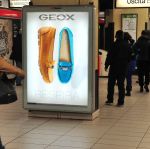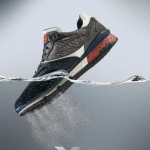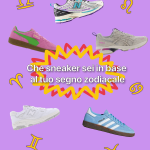
What happened to Geox, the brand of "the shoe that breathes"
After years of great success, a complicated 2021 is expected for the Italian brand that has marked an era
February 4th, 2021
Legend has it that Mario Moretti Polegato was on a hiking trip in the Nevada desert when he got the idea for a shoe "that breathes". The entrepreneur from Veneto, who was in the United States on a business trip - at the time for the family winery - was in fact taking a walk under the scorching sun: how to find some refreshment, especially with those shoes that didn't make his feet breathe? The idea was one and simple, Polegato took a Swiss army knife and made holes in the rubber sole of the shoes he was wearing. The relief was immediate. Polegato soon realized that he had had a brilliant intuition and, once back in Italy, he abandoned the family business to look for investors and brands to sell his project.
Twenty-five years later, in addition to being one of the first and most successful encounters between aesthetics and innovation for an Italian brand, Geox was more than anything a phenomenon of costume, as often happened to other Italian brands. Not so much because it identified particular social groups or subcultures - even if those who wore the brand's shoes were part of that magic circle that also appreciated Hogan shoes, Herno jackets, and voluminous pashminas - placing themselves in an intermediate audience (and price), not exactly luxury, but not cheap either. Most of all, the storytelling and in particular the advertising that accompanied the brand, especially in the early years, was unmatched. So much so that more or less everyone in Italy, today as then, has carved the slogan of the brand in their memory. "Respira", "The shoe that breathes", printed in large letters on advertising billboards in every city of Italy, but also repeated on television at every advertising break.
The historical innovation introduced by Polegato was the rubber sole made of a special membrane permeable to vapour - therefore to sweat - but impermeable to water, inspired by a product created by NASA. However, Polegato's success was not immediate. After three years of proposing his idea to dozens of footwear companies, the entrepreneur decided to patent the "breathable sole" and to start his own business, supported by five engineers from Treviso and in collaboration with the University of Padua. The brand name was coined by Polegato, geo, earth in Greek, to which he added a final 'x' as a symbol of innovation and avant-garde. The brand's first shoe came out in 1995 and was part of the kid's collection. The success was immediate and immense, well above the expectations of Polegato himself. The children's shoes were followed by those for men, women, and clothing.
There was a time when Geox was everywhere, on television, on the street (it was even a sponsor of Formula 1 for three years), and above all at people's feet, thanks to the variety of models, styles and prices it offered. A widespread diffusion both geographically, with an immense network of stores and retailers, and aesthetic, going to dominate the Italian imagination, offering a sober, classic style with a new twist. In just over twenty years, Geox became the first company in Italy in the casual footwear sector and the third in the world with 30 thousand employees and 1150 stores in 114 countries.
The secret of Geox's success - if there is one - is precisely the type of offer it proposed: casual but at the same time elegant shoes, made of premium materials and with a technology that no other brand in the sector could boast. The reality of Polegato represented a unicum in the Italian landscape, thanks to an approach towards the sector and use of technology that was lacking in Italy and which instead brought it closer to the leading brands of the market. To date, the company has about sixty patents, of which twenty used in the design and production phase.
Due to a certain creative stagnation and the progressive decline in interest in the brand, in recent years Geox has not registered the same success that it could boast a few years after its debut, a situation further aggravated by the pandemic year that has just ended. Between 2017 and 2018, three different CEOs alternated at the top of Geox (while Polegato remains the majority shareholder and president of the brand), the symptom of a complicated situation, as the latest data released by the brand also tell. Geox closed 2020 with revenues down to 534.9 million euros, following the closing months and a new sales strategy. In fact, the brand is planning the definitive closure of 110 stores in the period 2021-23. Among these, the closure of the Milanese flagship store in via Torino stands out. In the geography of the brand, Italy accounts for 23.4% of revenues, data-supported above all by online, which recorded +79% in revenues. In general, Geox reported negative results on all markets except China, where sales in direct stores went from -50% in the first quarter to +4% in the fourth quarter, and Russia, which grew by 5% in the last three months of 2020. As already demonstrated by the Topshop case and the bankruptcy of several historic American department stores, a business model based on physical presence and therefore on a network of stores scattered all over the world has come out deeply weakened by the pandemic.
In addition to aiming for a more fluid and digital-oriented business model, streamlining the network of physical stores by a lot, this could be the right time for Geox to aim for aesthetic renewal, capturing the needs and desires of a market now saturated with sneakers, which is moving towards quality formal wear. Formal wear that breathes, perhaps.
































































